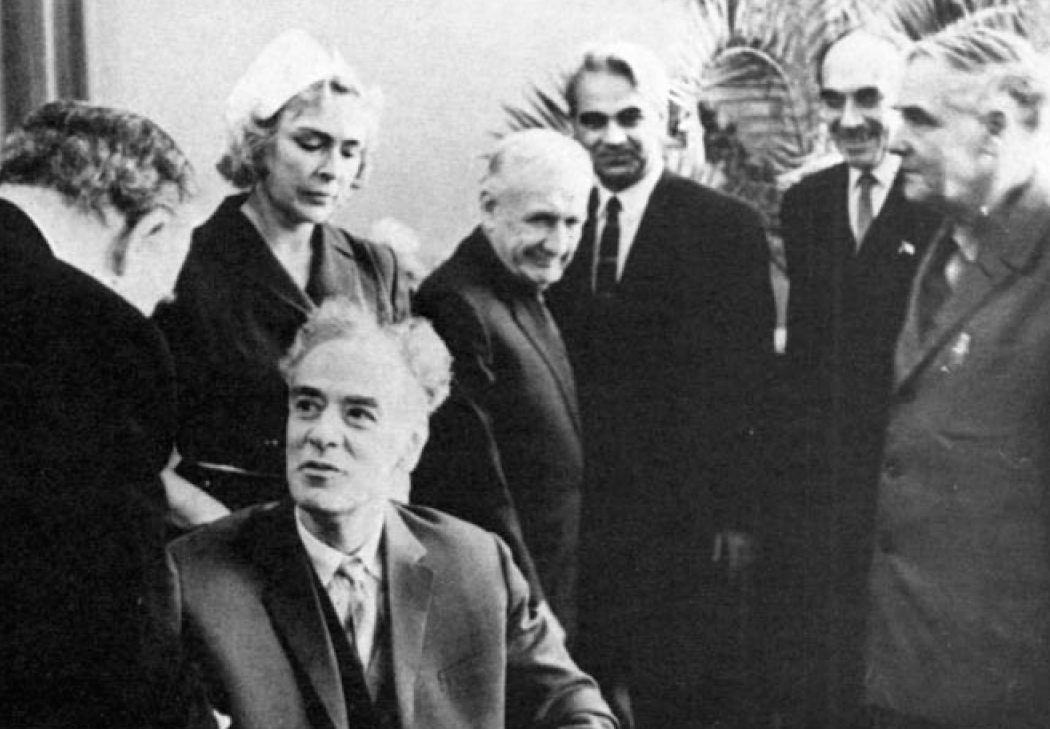A Tribute by Vitaly Ginzburg
DOI: 10.1063/1.2408531
Landau’s name is among the most famous physicists of our time. There are many reasons for this: scientific achievements in different fields of physics, popularity of his books (especially the manyvolume course in theoretical physics produced jointly with Evgeny Lifshitz, which has been translated completely or partially into ten languages), a vivid personality, and an inimitable flair for polemics.
A most outstanding representative of theoretical physics as a profession, Academician Landau made an invaluable contribution to the formation and establishment of the style of modern theoretical physics.
Though a lot of things can be said about style and form in literature, the problem of style in science remains obscure and sometimes in complete darkness; compared to content, it plays a much smaller part in science than in art. If you take a book or a physics journal, however, with both publications 100 years old or even dating from the beginning of our century, you will easily see that the importance of style, particularly in science, is very great.
Sometimes such books and articles are almost impossible to read or very difficult to understand. The modern form of theoretical physics is distinguished by a characteristic laconism; only by operating expertly with the modern style, which found such a vivid and skilled expression in Landau’s works and courses, can one remain the master of the situation through the whole of theoretical physics. You can engage today in the theory of superfluidity, tomorrow in quantum-field theory, and the day after tomorrow in the theory of metals. Landau is actually such a master of the situation, and he has helped his pupils to follow his lead.

Presentation of the Nobel Prize to Landau by the Swedish ambassador to the USSR (December 1962). Those present at the ceremony are (from left) Mrs Landau, Igor Tamm, Mstislav Keldysh, Nikolai Semenov, and Peter Kapitsa.
TASS FROM SOVFOTO

Those who know Landau mainly from his books can assume that he is primarily an educator, an author of textbooks, a person who systematizes things already known but produces nothing new. Such a conclusion, however, would be quite wrong. Landau is an outstanding physicist, who is, at the same time, an educator by inclination. It is rare when one meets the combination of these two aspects in a single personality. I think that actually here we find the key to the assessment of Landau’s place in theoretical physics.
Landau’s occasional abruptness has brought about misconceptions that have become a part (and a rather distorted part) of a legend. I, for instance, have heard people saying, “Landau thinks he is more clever than anyone else.” This is completely erroneous, however, and there are many chances for one to see how soberly and modestly Landau assesses his place in science. Many years ago, his love for systematization and clarity led him to classify physicists, by way of a joke, according to the scale of a slide rule. This means that a physicist of second-class standing has achieved ten times less than a physicist of the first class. According to this scale, Albert Einstein, even better than first class, belongs to the 0.5 class, while Niels Bohr, Erwin Schrödinger, Werner Heisenberg, Paul Dirac, Enrico Fermi, and some others belong to the first class. As for himself, Landau used to say that he was in the 2.5 class, and only ten years ago, satisfied with his work, he said he had reached the second class.
Landau holds a very high opinion of some of his young contemporaries whom he considers more capable than himself. One such is, for instance, Richard Feynman. In 1963, I met Feynman at a conference in Poland: He asked me some questions about Landau’s health and about Landau himself. In the course of the conversation, I mentioned that Landau thought highly of the results of Feynman’s work and considered that they were more important than his own. As far as I remember, Feynman became somewhat embarrassed and declared with resolution that Landau was wrong. This is naturally not the most important thing, however; I mention this incident merely to emphasize how much Landau is appreciated even by the very critically minded and outstanding theorists like Feynman.
Landau’s very critical attitude and his opinion that many ideas (or, to be more precise, hints at ideas) are “pathological” spring in a substantial measure from his sober nature and clarity of thinking. His criticism and his denial of certain proposals are always based on scientific grounds and thoroughly deliberated arguments. It is quite a different thing that Landau does not always like to explain his remarks: Often he answers, “Think for yourself.” The fact that he is not always ready to answer and explain, however, has nothing in common with conceit or snobbery. A profoundly democratic individual, he is alien to pomposity and respect for rank. Any student could discuss scientific problems with him without difficulty, with the single stipulation that held good for all: The student had to achieve the necessary level of understanding and analyze the problem instead of expecting Landau to think for him and do the things that the student could do himself.
At 54, his acumen was just as great as before. The level of his work had not deteriorated; the mastery of new techniques of calculations was not a problem for him. He remained at the front ranks of theoretical physics. It was the blow of a truck—a road accident—that took place on 7 January 1962, that interrupted Landau’s work.
Catastrophes and their consequences are almost always incongruous. However, when it comes to the accident from which Landau suffered, it seems particularly incongruous and monstrously injust.
